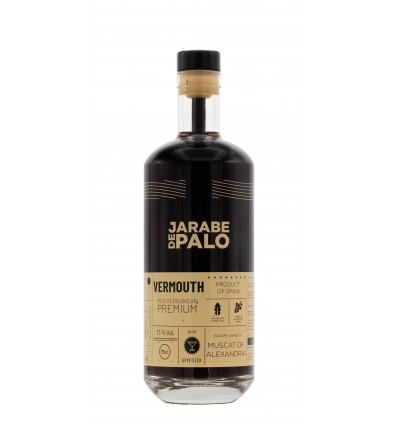Its evolution has transcended classic formulas and has given way to a new generation of expressions that challenge the limits of taste and the drinking experience. From innovative production methods to unexpected pairings, vermouth has found its place in contemporary cocktails and on the palates of discerning consumers.
Nowadays, vermouth is no longer limited to an aperitif before a meal. Its versatility has positioned it as a protagonist in gastronomic experiences, specialized tastings and creative blends that elevate the concept of flavored spirits. Its complexity and depth have captured the attention of mixologists and spirits lovers, who have taken its enjoyment to new levels.
The evolution of flavor: Innovations and trends
Vermouth is undergoing a transformation that combines tradition with the avant-garde. This drink, which has historically been a combination of wine fortified with herbs and spices, has begun to incorporate new techniques and flavors that expand its possibilities:
- Barrel aging: Some producers have experimented with aging in oak barrels, which contributes more complex nuances and notes of vanilla, caramel and nuts.
- Experimental botanical infusions: From exotic spices to local ingredients, new vermouths seek to differentiate themselves through unique combinations that enhance their aromatic character.
- Terroir vermouths: As with wine, some producers are focusing on highlighting the specific characteristics of each region, using local ingredients that give the beverage a unique identity.
- Low-alcohol and non-alcoholic options: In response to the growing demand for lighter options, lower-alcoholic versions of vermouth and even non-alcoholic alternatives have emerged that maintain the complexity and characteristic aromatic profile.
The sensory experience of Vermouth
One of the great virtues of vermouth is its ability to adapt to different combinations, which allows it to enhance its flavor and aroma. Beyond the classic olive or slice of lemon, there are several ways to enhance its botanical character:
- Orange peel: Provides a citric touch that balances the bitter notes of the vermouth, highlighting its freshness and softening its intensity.
- Cinnamon stick: Its spicy sweetness perfectly complements the herbal nuances of the vermouth, adding depth and warmth to the drink.
- Clove: An ingredient that intensifies the bitter and spicy flavors, giving a more robust character to the vermouth.
- Bay leaves: Its slightly earthy and aromatic profile enhances the complexity of the herbs present in the vermouth.
- Fresh or sliced ginger: Provides a spicy and refreshing touch, ideal for balancing vermouths with a sweet tendency.
- Juniper berry: Enhances herbal nuances and adds a light resinous touch, similar to gin.
- Star anise: Its sweetness and aniseed notes harmonize well with the botanical richness of vermouth.
These combinations can be enjoyed in cocktails as well as on their own, infusing the vermouth cold or adding these ingredients directly into the glass to enhance their flavor.
Recommended products
-
Vermouth Jarabe de Palo – White Vermouth
12,95€ IVA Incluido -
Negroni
25,63€ IVA Incluido -
Vermouth Jarabe de Palo – Red Vermouth
12,95€ IVA Incluido -
Vermouth Torino White 70 Cl
7,15€ IVA Incluido -
Vermouth Torino Red 70 Cl
7,15€ IVA Incluido
Beyond the appetizer
Although vermouth has historically been associated with aperitifs, its versatility makes it a perfect match for a wide variety of foods. Beyond the classic pairings with olives or nuts, there are surprising combinations that enhance its flavors:
- Cured and semi-cured cheeses: The complexity of the vermouth enhances the saline and umami notes of the cheeses, creating a balanced and harmonious combination.
- Dark chocolate and spicy desserts: Its botanical and slightly bitter character contrasts exquisitely with the intensity of cocoa and spices such as cinnamon or cardamom.
- Seafood and smoked fish: The freshness and herbal touch of vermouth bring out the flavors of the sea without overshadowing them.
- Asian dishes: Some versions with citrus and spicy notes complement Japanese or Thai cuisine very well, especially dishes with soy, ginger and sesame.
In addition to pairing, vermouth tastings have become sensory experiences that allow you to explore the differences between styles, production methods and aromatic profiles. Organizing a guided tasting can be a fascinating way to discover new ways to enjoy this beverage.
Vermouth in the modern cocktail bar
Vermouth has transcended its traditional role to become an essential ingredient in contemporary mixology. Beyond classic cocktails such as the Negroni or the Manhattan, its use has diversified into innovative creations that explore its versatility:
- Refreshing cocktails: Combined with tonic water, soda or ginger beer, vermouth becomes a light and easy drinking option.
- Blends with alternative distillates: The combination with mezcals, aged rums or less conventional whiskies has given rise to unexpected proposals full of character.
- Aromatization of cocktails: Its botanical richness allows enhancing other ingredients without adding sugars or artificial syrups.
The new way to enjoy Vermouth
Vermouth is not just a drink, it is an experience. Its enjoyment is linked to social rituals that have evolved over time. Nowadays, this liqueur is re-emerging as an option that invites conversation and leisurely enjoyment.
- Vermuterías and specialized bars: Spaces dedicated exclusively to vermouth are appearing in different cities, offering everything from classic selections to experimental creations.
- Events and festivals: Fairs dedicated to this beverage are becoming increasingly popular, bringing together producers, mixologists and enthusiasts for tastings, talks and workshops.
- Conscious and sustainable consumption: Interest in artisanal and locally produced products has driven demand for vermouths made with organic ingredients and environmentally friendly processes.
An evolving beverage
Vermouth is much more than a traditional aperitif; it is a constantly evolving beverage that continues to win over new generations of consumers. Its versatility allows it to adapt to different moments and preferences, whether enjoyed on its own, with ice and a citrus twist, or integrated into sophisticated cocktails that enhance its botanical notes.
The renaissance of vermouth is not just a passing fad, but a renewed appreciation for its complexity and its ability to combine with different flavors and gastronomic styles. Whether in signature bars, specialized festivals or home gatherings, its presence is increasingly consolidated as a sophisticated and accessible option.
In addition, its relationship with sustainability and artisanal production has made it a favorite choice for those seeking authentic and quality experiences. The possibility of experimenting with different combinations of spices, herbs and fruits makes it a drink that invites exploration and creativity.
In short, vermouth is a testament to how a drink with centuries of history can continue to evolve and reinvent itself. For connoisseurs and new explorers of the world of spirits alike, its sensory richness and capacity for transformation ensure that it will continue to be one of the most interesting and enjoyable options in the spirits scene.
Do you want to discover more charming drinks? Visit our online liquor store.











